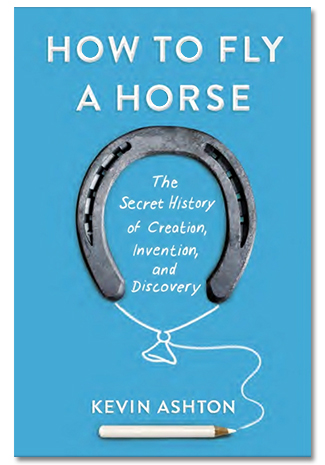How to Fly a Horse, book review: Debunking the myth of genius


"We may hope that machines will eventually compete with men in all purely intellectual fields. But which are the best ones to start with? Even this is a difficult decision. Many people think that a very abstract activity, like the playing of chess, would be best. It can also be maintained that it is best to provide the machine with the best sense organs that money can buy, and then teach it to understand and speak English." Alan Turing, Computing Machinery and Intelligence, 1950.
In trying to understand how far machine intelligence can go, the great Cambridge-educated mathematician Turing defined the problem in a way that still resonates today. As it turned out, getting a machine to learn how to play chess was the easy bit. It's the second part -- providing that chess-playing machine with the "best sense organs that money can buy, and then teach[ing] it to understand and speak English" -- that's more problematic.
One of the people at the heart of this field is MIT's Kevin Ashton, who is, in the truest sense of the word, an iconoclast -- that is, a "person who attacks cherished beliefs, traditional institutions ... as being based on error or superstition" as the OED puts it.
Ashton is also, in another meaning of the word, "a breaker or destroyer of images". Not that he goes around damaging paintings. No, what he has set about doing is destroying our image of the world and how it works, and our self-image -- our view of our place in it.
Kevin Ashton is best known as the man who came up with the concept of the Internet of Things (IoT). If you can't get enough or have heard enough of this buzz-phrase du jour, then praise or blame him.
As Ashton told the Smithsonian in January, he first coined the term back in 1999: "In the twentieth century, computers were brains without senses -- they only knew what we told them. That was a huge limitation: there is many billion times more information in the world than people could possibly type in through a keyboard or scan with a barcode."
"In the twenty-first century, because of the Internet of Things, computers can sense things for themselves. It's only been a few years, but we already take networked sensors for granted".
Ashton develops his ideas about innovation in How to Fly a Horse: the Secret History of Creation, Invention, and Discovery. The book's title is designed to grab attention, but it also delivers on its promise. Read it and you won't be disappointed: more than that, you should find, as I did, that it amply repays a few hours of your time.
His basic theory is that inventions do not happen in a predictable, linear fashion. In Ashton's view, invention is something that happens by chance, or by trial and error, or because a particular set of circumstances comes together in unfathomable ways. He also gives short shrift to notions of genius and 'eureka' moments: on that score, he is very much with Thomas Edison on the 'ninety nine percent perspiration' side of the coin.
One example he uses is the Wright brothers. We know that Orville and Wilbur invented the first machine capable of powered flight but, as Ashton points out, they did not just sit down one day and decide to design an aeroplane. What they set out to create was "a bicycle with wings" Along the way, and with much help from the Alcoa company's then-recent development of an aluminium crankcase, they came up with the aeroplane.
Vanilla pod caste
Ashton's book is full of such stories, all of which, in their different ways, trace the history of invention and the myriad ways they come about. His starting point is one of the most interesting and offbeat. It is the story of Edmond Albius and vanilla.
Vanilla is the world's most popular spice and, Ashton tells us, the second most expensive after saffron. It is also, thanks to the world's massive consumption of ice cream, one of the most abundant spices, grown all over the world.
But while we're all familiar with vanilla, what I did not know was that it originated in Mexico and for centuries could not be grown outside its native land thanks to the absence of its natural pollinator, a local species of bee. Then, on the French-owned Indian Ocean island of Réunion, a young slave called Edmond Albius hit upon a way of quickly hand-pollinating vanilla flowers.
As Ashton points out, the problem Albius had was in convincing his owner, Féréol Bellier Beaumont, of what he had done. This took some doing as, at that time (the 1800s), a white Frenchman was not particularly well-disposed to the idea that a black slave could achieve something that had eluded his supposed betters for centuries.
However, to his credit, Bellier Beaumont went to great lengths to convince first other people, and later the world, that it was his slave, and no-one else, who had unlocked the secret of pollinating vanilla.
Ashton begins his history of invention with this example, and it's well chosen because it highlights his key conclusion: invention is no respecter of wealth or education -- anybody in the right place at the right time, with enough persistence, and maybe a dose of luck thrown in, can do it.
Further Reading:
Search, book review: The new 'hinge' linking people and machines
A Female Genius, book review: Lord Byron's daughter and the dawn of the computer age
Spam Nation, book review: Inside today's cybercrime ecosystem